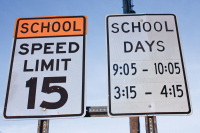National park and local communities provide a great mix
It’s a chicken or egg argument, but in this case it doesn’t really matter which is right. Either way the whole region benefits.
A study released two weeks ago by the National Park Service ranked the Great Smoky Mountains National Park tops in visitor spending among the country’s 388 national park units. What we know is that travelers to this region take time to visit the Great Smokies. What we don’t know is whether that is the primary reason for tourists coming to this area or if it is one of the many attractions that make Western North Carolina and East Tennessee so popular.
The study was conducted by a professor at Texas A&M University. As it tallied the economic impact of this nation’s national parks, statisticians assumed that the national park was the reason for all the visitors who came to an area and spent money. While that may be obvious at the out-of-the-way parks that dominate out West, it’s impossible to draw that conclusion about visitors to the Smokies. Here, it is estimated that half the country’s population is a day’s drive from the national park.
“Here in Swain County people come to do whitewater rafting and all kinds of outdoor adventure. They also come to the Great Smoky Mountain Railroad. What they have in common is that almost everyone wants to visit the waterfalls at Deep Creek (in the Great Smoky Mountains National Park),” said Gwen Bushyhead, director of the Swain County Chamber of Commerce.
Bushyhead’s comment could describe the entire region. Maggie Valley tourists may plan their vacation around a stay at Cataloochee Ranch but will also visit Cataloochee Valley and Biltmore Estate. In Franklin, a gem aficionado in town for the Gemboree may make a special trip to the Smokies to catch the views from Clingman’s Dome.
The truth is that it’s not worth splitting hairs over. People in this region have known for years that the Smokies are the most-visited national park in the country. The fact that the 9.2 million visitors to this park spend the most money — $652 million in the region, according to the study — should come as no surprise.
Think about it: there are no facilities in the park except the campgrounds, so the great majority of visitors must stay in hotels, resorts, private campgrounds or rental homes; they eat out, visit the casino, golf, shop and more. Very few visitors to the Smokies pull a backpack and tent out their car and spend their entire trip in the backcountry. We can only suspect that many visitors to other national park units spend much more time in the wilderness.
All the places to spend money around the Smokies is a result of the work by dozens of local communities to create special places. Whether it’s Bryson City, the businesses in the Nantahala Gorge, Sylva, Waynesville, Maggie Valley or Cherokee on the North Carolina side, each community offers up its own personality.
The truth is that the Smokies and its surrounding communities have formed a wonderful symbiotic relationship that keeps visitors coming back each year to experience both the majestic wilderness and the uniqueness of some cool downtowns. That’s a good thing, and it’s probably good to spread the kudos around pretty evenly.





